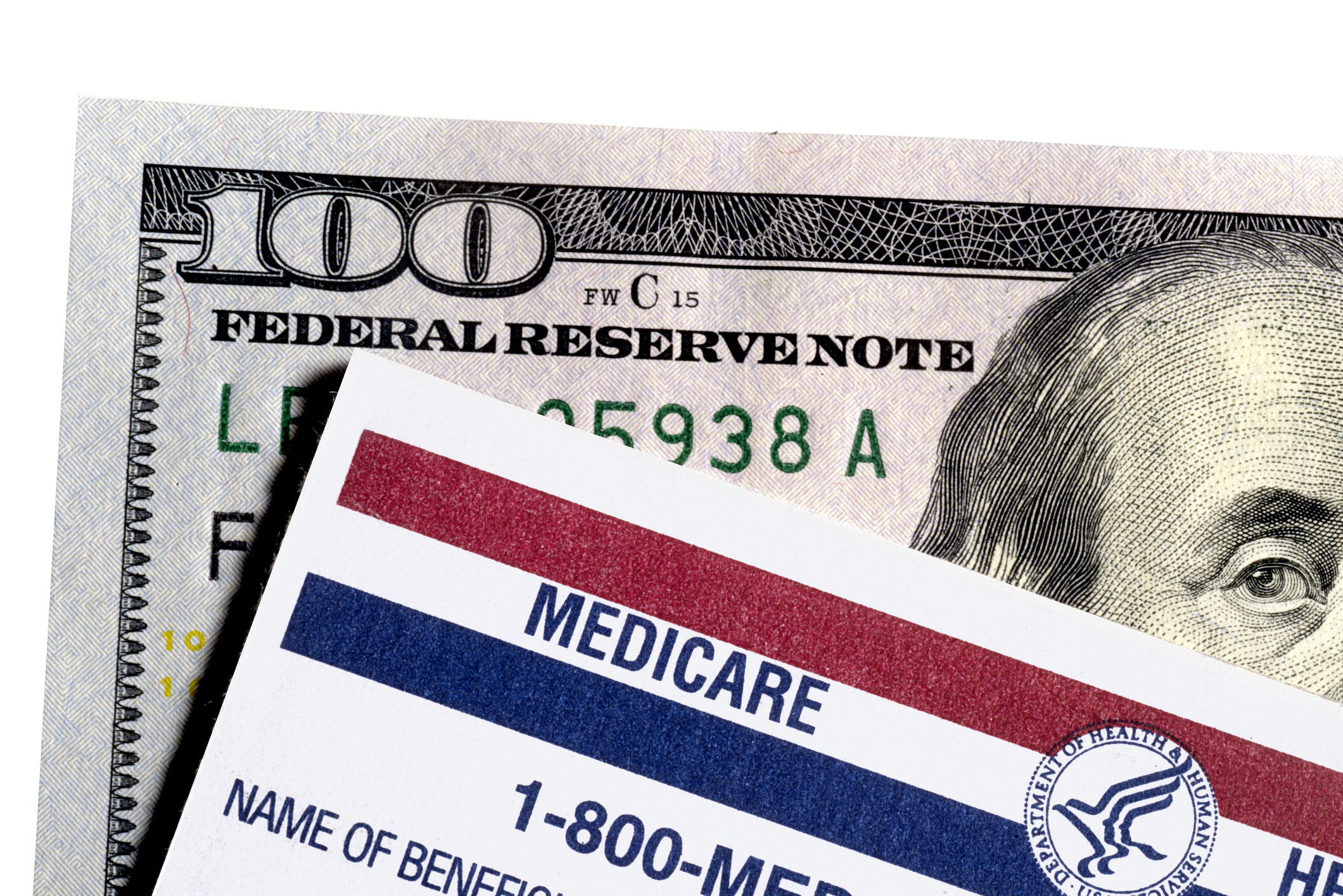Medicare Drug Plans Are Getting Better Next Year. Some Will Also Cost More.
Upcoming changes to the Part D drug benefit, including a $2,000 cap on out-of-pocket medication, will benefit millions of Americans. But higher premiums may also be on the way

When Pam McClure learned she’d save nearly $4,000 on her prescription drugs next year, she said, “it sounded too good to be true.” She and her husband are both retired and live on a “very strict” budget in central North Dakota.
By the end of this year, she will have spent almost $6,000 for her medications, including a drug to control her diabetes.
McClure, 70, is one of about 3.2 million people with Medicare prescription drug insurance whose out-of-pocket medication costs will be capped at $2,000 in 2025 because of the Biden administration’s 2022 Inflation Reduction Act, according to an Avalere/AARP study.

Sign up for Kiplinger’s Free E-Newsletters
Profit and prosper with the best of expert advice on investing, taxes, retirement, personal finance and more - straight to your e-mail.
Profit and prosper with the best of expert advice - straight to your e-mail.
“It’s wonderful — oh my gosh. We would actually be able to live,” McClure said. “I might be able to afford fresh fruit in the wintertime.”
The IRA, a climate and health care law that President Joe Biden and Vice President Kamala Harris promote on the campaign trail as one of their administration’s greatest accomplishments, radically redesigned Medicare’s drug benefit, called Part D, which serves about 53 million people 65 and older or with disabilities. The administration estimates that about 18.7 million people will save about $7.4 billion next year alone due to the cap on out-of-pocket spending and less publicized changes.
The annual enrollment period for Medicare beneficiaries to renew or switch drug coverage or to choose a Medicare Advantage plan began Oct. 15 and runs through Dec. 7. Medicare Advantage is the commercial alternative to traditional government-run Medicare and covers medical care and often prescription drugs. Medicare’s stand-alone drug plans, which cover medicines typically taken at home, are also administered by private insurance companies.
“We always encourage beneficiaries to really look at the plans and choose the best option for them,” Chiquita Brooks-LaSure, who heads the Centers for Medicare & Medicaid Services, told KFF Health News. “And this year in particular it’s important to do that because the benefit has changed so much.”
Improvements to Medicare drug coverage required by the IRA are the most sweeping changes since Congress added the benefit in 2003, but most voters don’t know about them, KFF surveys have found. And some beneficiaries may be surprised by a downside: premium increases for some plans.
CMS said Sept. 27 that nationwide the average Medicare drug plan premium fell about $1.63 a month — about 4% — from last year. “People enrolled in a Medicare Part D plan will continue to see stable premiums and will have ample choices of affordable Part D plans,” CMS said in a statement.
However, an analysis by KFF, a health information nonprofit that includes KFF Health News, found that “many insurers are increasing premiums” and that large insurers including UnitedHealthcare and Aetna also reduced the number of plans they offer.
Many Part D insurers’ initial 2025 premium proposals were even higher. To cushion the price shock, the Biden administration created what it calls a demonstration program to pay insurers $15 extra a month per beneficiary if they agreed to limit premium increases to no more than $35.
“In the absence of this demonstration, premium increases would certainly have been larger,” Juliette Cubanski, deputy director of the Program on Medicare Policy at KFF, wrote in her Oct. 3 analysis.
Nearly every Part D insurer agreed to the arrangement. Republicans have criticized it, questioning CMS’ authority to make the extra payments and calling them a political ploy in an election year. CMS officials say the government has taken similar measures when implementing other Medicare changes, including under President George W. Bush, a Republican.
In California, for example, Wellcare’s popular Value Script plan went from 40 cents a month to $17.40. The Value Script plan in New York went from $3.70 a month to $38.70, a more than tenfold hike — and precisely a $35 increase.
Cubanski identified eight plans in California that raised their premiums exactly $35 a month. KFF Health News found that premiums went up for at least 70% of drug plans offered in California, Texas, and New York and for about half of plans in Florida and Pennsylvania — the five states with the most Medicare beneficiaries.
Spokespeople for Wellcare and its parent company, Centene Corp., did not respond to requests for comment. In a statement this month, Centene’s senior vice president of clinical and specialty services, Sarah Baiocchi, said Wellcare would offer the Value Script plan with no premium in 43 states.
In addition to the $2,000 drug spending limit, the IRA caps Medicare copayments for most insulin products at no more than $35 a month and allows Medicare to negotiate prices of some of the most expensive drugs directly with pharmaceutical companies.
It will also eliminate one of the drug benefit’s most frustrating features, a gap known as the “donut hole,” which suspends coverage just as people face growing drug costs, forcing them to pay the plan’s full price for drugs out-of-pocket until they reach a spending threshold that changes from year to year.
The law also expands eligibility for “extra help” subsidies for about 17 million low-income people in Medicare drug plans and increases the amount of the subsidy. Drug companies will be required to chip in to help pay for it.
Starting Jan. 1, the redesigned drug benefit will operate more like other private insurance policies. Coverage begins after patients pay a deductible, which will be no more than $590 next year. Some plans offer a smaller or no deductible, or exclude certain drugs, usually inexpensive generics, from the deductible.
After beneficiaries spend $2,000 on deductibles and copayments, the rest of their Part D drugs are free.
That’s because the IRA raises the share of the bill picked up by insurers and pharmaceutical companies. The law also attempts to tamp down future drug price hikes by limiting increases to the consumer price inflation rate, which was 3.4% in 2023. If prices rise faster than inflation, drugmakers have to pay Medicare the difference.
“Before the redesign, Part D incentivized drug price increases,” said Gina Upchurch, a pharmacist and the executive director of Senior PharmAssist, a Durham, North Carolina, nonprofit that counsels Medicare beneficiaries. “The way it is designed now places more financial obligations on the plans and manufacturers, pressuring them to help control prices.”
Another provision of the law allows beneficiaries to pay for drugs on an installment plan, instead of having to pay a hefty bill over a short period of time. Insurers are supposed to do the math and send policyholders a monthly bill, which will be adjusted if drugs are added or dropped.
Along with big changes brought by the IRA, Medicare beneficiaries should prepare for the inevitable surprises that come when insurers revise their plans for a new year. In addition to raising premiums, insurers can drop covered drugs and eliminate pharmacies, doctors, or other services from the provider networks beneficiaries must use.
Missing the opportunity to switch plans means coverage will renew automatically, even if it costs more or no longer covers needed drugs or preferred pharmacies. Most beneficiaries are locked into Medicare drug and Advantage plans for the year unless CMS gives them a “special enrollment period.”
“We do have a system that is run through private health plans,” CMS chief Brooks-LaSure said. But she noted that beneficiaries “have the ability to change their plans.”
But many don’t take the time to compare dozens of plans that can cover different drugs at different prices from different pharmacies — even when the effort could save them money. In 2021, only 18% of Medicare Advantage drug plan enrollees and 31% of stand-alone drug plan members checked their plan’s benefits and costs against competitors’, KFF researchers found.
For free, unbiased help selecting drug coverage, contact the State Health Insurance Assistance Program at shiphelp.org or 1-877-839-2675.
KFF Health News is a national newsroom that produces in-depth journalism about health issues and is one of the core operating programs at KFF — an independent source of health policy research, polling, and journalism. Learn more about KFF.
Related content
Get Kiplinger Today newsletter — free
Profit and prosper with the best of Kiplinger's advice on investing, taxes, retirement, personal finance and much more. Delivered daily. Enter your email in the box and click Sign Me Up.
KFF Health News Contributing Writer on health policy and aging, Lancet's DC Correspondent, ex-Plain Dealer (OH) aging issues reporter.
-
 Stock Market Today: Stocks Gain on Tech, Auto Tariff Talk
Stock Market Today: Stocks Gain on Tech, Auto Tariff TalkThe Trump administration said late Friday that it will temporarily halt tariffs on some Chinese tech imports.
By Karee Venema
-
 Sam's Club Plans Aggressive Expansion: Discover Its New Locations
Sam's Club Plans Aggressive Expansion: Discover Its New LocationsSam's Club expansion plans will open up to 15 new stores each year. Learn where they plan to open in 2025.
By Sean Jackson
-
 Americans' Retirement Readiness Gets a Bad Grade in One Area
Americans' Retirement Readiness Gets a Bad Grade in One AreaMillions of Americans score poorly on retirement readiness due to this Achilles' heel. Are you prepared?
By Christy Bieber
-
 How Baby Boomers and Gen Xers Are Redefining Retirement Living
How Baby Boomers and Gen Xers Are Redefining Retirement LivingBoth generations need to embrace change and leverage real estate as a dynamic asset in their retirement planning. Here's how financial advisers can help, too.
By David Conti, CPRC
-
 How Good Advisers Manage Risk in Challenging Markets
How Good Advisers Manage Risk in Challenging MarketsThey understand the difference between what might be real challenges to an investor's strategy and fear brought on by market volatility.
By Ryan L. Kirk, CFA®
-
 Best Places for LGBTQ People to Retire Abroad
Best Places for LGBTQ People to Retire AbroadLGBTQ people can safely retire abroad, but they must know a country’s laws and level of support — going beyond the usual retirement considerations.
By Drew Limsky
-
 Financial Planning's Paradox: Balancing Riches and True Wealth
Financial Planning's Paradox: Balancing Riches and True WealthWhile enough money is important for financial security, it does not guarantee fulfillment. How can retirees and financial advisers keep their eye on the ball?
By Richard P. Himmer, PhD
-
 A Confident Retirement Starts With These Four Strategies
A Confident Retirement Starts With These Four StrategiesWork your way around income gaps, tax gaffes and Social Security insecurity with some thoughtful planning and analysis.
By Nick Bare, CFP®
-
 Should You Still Wait Until 70 to Claim Social Security?
Should You Still Wait Until 70 to Claim Social Security?Delaying Social Security until age 70 will increase your benefits. But with shortages ahead, and talk of cuts, is there a case for claiming sooner?
By Evan T. Beach, CFP®, AWMA®
-
 Retirement Planning for Couples: How to Plan to Be So Happy Together
Retirement Planning for Couples: How to Plan to Be So Happy TogetherPlanning for retirement as a couple is a team sport that takes open communication, thoughtful planning and a solid financial strategy.
By Andrew Rosen, CFP®, CEP